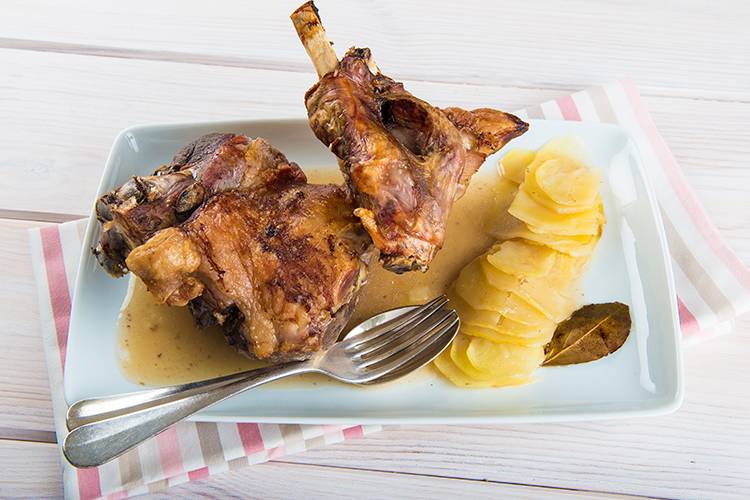Lamb
Spain is a beef producing country. Lamb, though considered one of the most tender and delicate meats, is not one of the most widely consumed; it is only eaten at Christmas, meaning the price is high.
how to shop
Share

The principle sheep rearing areas are the communities of Castilla, Aragón, Extremadura and Andalucia. In fact, various protective geographic specifications have been put in place with the aim of differentiating and protecting various native breeds. The geographic specifications are as follows:
• The ¨Ternasco de Aragón¨ comes from three native breeds: “Rasa Aragonesa”, “Ojinegra de Teruel” and “Roya Bibilitana¨ This is a tender, tasty and excellent quality meat that is sold principally as leg, shoulder and ribs.
• The ¨Lechazo de Castilla y León¨ comes from the "Castellan", "Churra" and "Ojalada" breeds that are the only capable of raising ¨lechazo¨ (young lamb less than two months that are still raised on their mother´s milk). This meat is very tender, of excellent quality and enjoyed greatly by consumers.
• "El Cordero Manchego" comes from the "Manchega" breed. This sheep is used equally for the production of milk used in producing cheese with the denomination of origen "Queso Manchego" as for the production of meat.
• The "Cordero de Navarra" comes from the breeds "Navarra" and "Lacha".
When it's time to purchase lamb, it's important to take into account the sensory characteristics of the lamb. It is important that the cut gives off a pleasant smell, the tone of the meat is pink, and that the cut has a considerable layer of fat. The main production season is spring, when lambs are born and the pastures are richest.
Different types of lamb can be found in the market which are defined by the age and weight of the sheep:
• "Cordero Lechal", which is the smallest and has only been fed on maternal milk.
• "Cordero Pascual" which is more than 3 months old and has been fed on dry food or grass. This is the most consumed variety in our country.
• Meat from older sheep, known as mutton, is tougher and less tasty.
The main production season is spring, when lambs are born and the pastures are richest.

Once at home, fresh meat must be consumed immediately. If this is not possible, conserve the meat by placing it in the coldest part of the fridge, avoiding contact with other foods.
Lamb is one of the most versatile meats, lending itself to a large number of different dishes which use different cuts of meat and can cater to different numbers of diners and personal taste.
Roasted lamb
The best cuts for roasting are the leg and the shoulder. Before roasting, marinating the meat is recommendable, taking into acount that the younger the lamb, less marinating is needed. In order to prepare 'cordero lechal', spread olive oil on the surface, salt the meat and rub with garlic (aromatic herbs, such as rosemary and thyme can also be added), and then leave to rest for one to two hours.
Tip: If the meat comes from an older lamb, or the cut is not fresh, make a marinade with wine, garlic and aromatic herbs, and leave to marinate before roasting. Using this method,the meat will soften and have a more pleasant flavour. |
To roast the meat well, precise control of timing and temperature is needed. The temperature should be high at first and then lower towards the end of the roast in order to ensure the center is well cooked. The cut should be basted with its own juices, or with meat stock, to make the meat juicier.
Stews
The best cuts for stews and casseroles are the flank and the breast. A good stew is made by first frying the meat with a little oil, then adding a liquid that could be water, wine or stock, and finally cooking over a low flame.
Tip: Stews and Casseroles are tastier if they are prepared ahead of time and left to sit. |
Grill
Generally lamb ribs are fried or cooked on the grill. Using a very hot grill or frying pan is important so that the meat doesn't lose its juices and dry out.
Tip: When flipping the meat in a frying pan, use a spatula rather than a fork. A fork can pierce the meat and cause it to lose its juices. |






